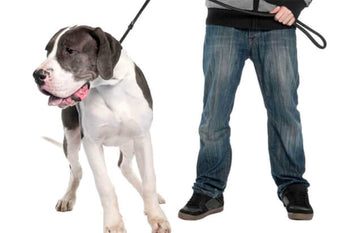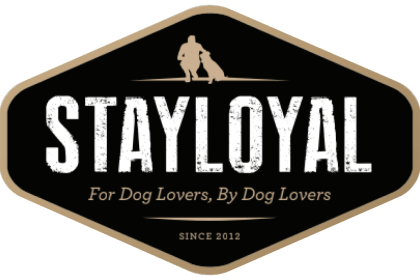How To Stop Your Dog Pulling On The Leash!

Nothing gives your dog greater pleasure than to be taken for a walk outside. This is a great time to bond with your dog and work on your dog training; however, most owners don’t enjoy taking their dogs for a walk. And that’s because they’re not taking the dog for a walk—the dog is taking them for a walk.
When our dogs leap around in delight at the mere sight of their leash in our hands, we often smile indulgently and think how adorable their excitement is. We struggle to keep them still just long enough to clip the leash onto their collar before they’re off again. That is not how you want to train your dog to behave.
Even a small dog tugging incessantly on the end of its lead is not enjoyable; a large dog capable of pulling you off your feet is even less so. It’s time again to remind your dog who is the leader and who is the follower. Every interaction with your dog is an opportunity to reinforce the basic principles of dog training. Don’t ignore this, thinking that a well-behaved dog doesn’t enjoy walks as much as a boisterous one. Believe me, they do!
The first step is to insist your dog sit calmly while you strap on its lead. Ideally, your dog has already been trained to sit on command. Have your dog sit and then pause a moment to make sure he’s calm. Some dogs may take minutes to settle, just stand still and wait. When calm attach the lead.
If the dog begins to jump around again, stop and command him to sit. Don’t yell at him. You’re training your dog that it is his own behaviour that delays his walk. Every time he sits quietly, immediately recognize and reward without getting him overly-excited. Once you attach his lead and he remains calm, only then do you take him outside.
The next thing is to let your dog relieve himself. Once that pressure’s off, your dog is going to be anxious to investigate every smell within sniffing distance, which is the main reason dogs pull so hard. If you pull back, their instinct is to pull harder, not ease up.
You have two options to train your dog to stop pulling on the leash. If he pulls, you can command him to sit, and refuse to move until he does; alternatively, you can do an abrupt about-face and begin walking in the opposite direction. Using the sit command works well with dogs that are fairly well trained; walking in the opposite direction is more effective if your dog tends to ignore you. You may feel a little silly at first but don’t let that deter you. You are the leader and you choose in which direction to walk.
Every time the dog pulls ahead and you swiftly turn away, he’ll find himself behind you, forced to walk in the direction you dictate. The idea is to train your dog that pulling on the leash immediately stops the walk.
When doing this you need to be consistent. You need to make sure every time your dog moves in front of you for a split second you immediately stop and turn around and walk in the opposite direction.
If you are vigilant and consistent, you’ll soon find your dog trotting alongside of you, waiting for your cue as to where to go. Both you and your dog will now enjoy your walks much more and everyone you pass will admire your well-trained dog!








